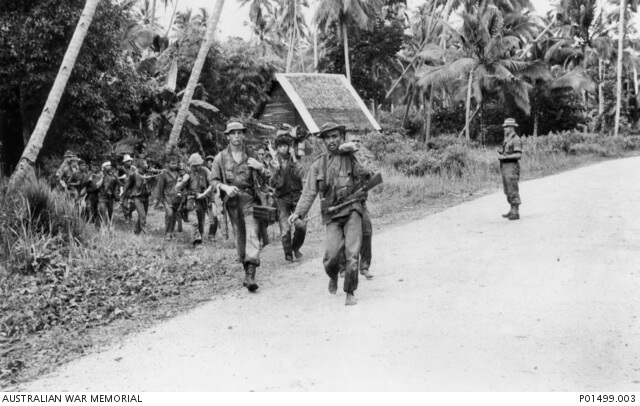

Image courtesy of Australian War Memorial
The Indonesian Confrontation
1963 – 1966
Served: 3,500
Died: 23
Wounded: 8
Between 1962 and 1966 Indonesia and Malaysia fought a small, undeclared war which came to involve troops from Australia and Britain. The antagonism that gave rise to confrontation was already apparent in December 1962, when a small party of armed insurgents, with Indonesian backing, attempted to seize power in the independent enclave of Brunei, only to be defeated by British troops from Singapore.
By early 1963 military activity had increased along the Indonesian side of the border in Borneo, as small parties of armed men began infiltrating Malaysian territory on propaganda and sabotage missions. These cross-border raids, carried out by Indonesian “volunteers”, continued throughout 1963; by 1964 Indonesian regular army units had also become involved.
Australian units which fought during the confrontation did so as part of a larger British and Commonwealth force under overall British command. Australia’s commitment to operations against Indonesia in Borneo and West Malaysia fell within the context of its membership in the Far East Strategic Reserve.
Two Australian battalion served in Sarawak, Borneo, and conducted extensive operations on both sides of the border and was involved in clashes with Indonesian regulars. Two squadrons of the Special Air Service, a troop of the Royal Australian Signals, several artillery batteries and parties of the Royal Australian Engineers were also involved in Borneo. Ships of the Royal Australian Navy served in the surrounding waters and several RAAF squadrons were also involved.
Continuing negotiations between Indonesia and Malaysia ended the conflict, and the two sides signed a peace treaty in Bangkok in August 1966. 23 Australians were killed during the confrontation, seven of them on operations, and eight were wounded.